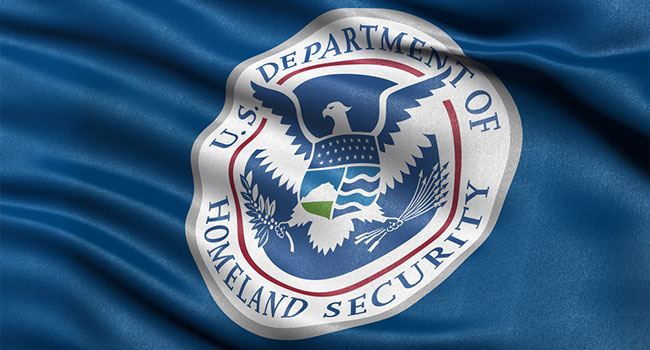
DHS Announces New Artificial Intelligence Task Force
Secretary of Homeland Security Alejandro N. Mayorkas recently announced two new initiatives to combat evolving threats during his first address on the State of the Homeland Security. Focused on two trends that will shape what President Biden has called a “decisive decade” for the world” - the revolution created by generative artificial intelligence (AI) and the multi-faceted threat posed by the People’s Republic of China (PRC) - the Secretary unveiled the Department’s first-ever AI Task Force and a Department-wide 90-day sprint to counter PRC threats.
The address, delivered at the Council on Foreign Relations in Washington, DC, also highlighted the mission areas detailed in the Quadrennial Homeland Security Review delivered to Congress yesterday, which include combatting a range of evolving threats like cybersecurity, targeted violence, and crimes of exploitation. The Secretary’s remarks offered an insightful look at how the homeland security environment has changed since the Department was founded 20 years ago, and the modern approach driving it into its third decade.
“The profound evolution in the homeland security threat environment, changing at a pace faster than ever before, has required our Department of Homeland Security to evolve along with it,” said Secretary of Homeland Security Alejandro N. Mayorkas. “We must never allow ourselves to be susceptible to ‘failures of imagination,’ which, as the 9/11 Commission concluded nearly 20 years ago, held us back from connecting the dots and preparing for the destruction that was being planned on that tragic day. We must instead look to the future and imagine the otherwise unimaginable, to ensure that whatever threats we face, our Department – our country – will be positioned to meet the moment.”
The initiatives announced today draw on the entirety of the capabilities and expertise that the more than 260,000 personnel of DHS bring to bear every day in the protection of our homeland. Secretary Mayorkas also participated in a fireside chat with CBS “Face the Nation” moderator and chief foreign affairs correspondent Margaret Brennan, which included questions from the audience of members of the independent foreign policy think tank.
Artificial Intelligence Task Force.
This is the first time the Department has announced a task force dedicated to AI. The Task Force will drive specific applications of AI to advance critical homeland security missions including:
- Integrate AI into our efforts to enhance the integrity of our supply chains and the broader trade environment. We will seek to deploy AI to more ably screen cargo, identify the importation of goods produced with forced labor, and manage risk;
- Leverage AI to counter the flow of fentanyl into the United States. We will explore using this technology to better detect fentanyl shipments, identify and interdict the flow of precursor chemicals around the world, and target for disruption key nodes in the criminal networks;
- Apply AI to digital forensic tools to help identify, locate, and rescue victims of online child sexual exploitation and abuse, and to identify and apprehend the perpetrators of this heinous crime; and
- Working with partners in government, industry, and academia, assess the impact of AI on our ability to secure critical infrastructure.
The Task Force shall report to Secretary Mayorkas regularly on its work and AI efforts across the Department. Within 60 days, the group will deliver a concept of operations and milestones for advancing the four priority initiatives outlined above.
The Task Force shall also be responsible for reviewing and where appropriate implementing the Homeland Security Advisory Council’s (HSAC) upcoming findings and recommendations on the intersection of AI and homeland security. .
Department-wide 90-day Sprint to Counter PRC Threats.
The Department-wide 90-day sprint will take immediate action to drive down risk and assess the evolving threat in six key areas:
- Defending critical infrastructure;
- Disrupting the global fentanyl supply chain;
- Preventing the PRC from abusing our lawful travel system to harass dissidents;
- Protecting against PRC malign economic influence;
- Advancing safety, security, and economic prosperity in the Arctic and Indo-Pacific; and
- Sharing information on threats posed by the PRC with our partners across all levels of government and the private sector.
The final report will identify opportunities for enduring enhancements to DHS posture to counter these threats. This may include further opportunities for public-private partnership, best practices that can be applied Department-wide, and opportunities for further enhancements to ensure DHS has the tools and capabilities to counter PRC threats today and well into the future.